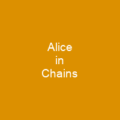Understanding Supply Chains: A Complex Web of Logistics
A supply chain is like a vast network of veins and arteries, converting raw materials into finished products that reach our hands. But what exactly does this intricate system entail? How do companies ensure the efficient flow of goods from production to distribution?
The Two Stages of Supply Chains
At its core, a supply chain consists of two main stages: production and distribution. The production stage is where manufacturing centers churn out components and semi-finished parts. Think of it as the heart pumping blood through our body—constantly working to keep everything running smoothly. Meanwhile, the distribution stage involves central and regional distribution centers that transport these products to end-consumers, much like how veins carry oxygenated blood throughout the body.
Supply Chain Management: The Art of Coordination
Managing a supply chain is akin to orchestrating a symphony. Each entity must play its part in harmony for the entire system to function optimally.
A typical supply chain requires at least three entities and should be coordinated to focus on end-customer buying behavior. Academics argue that this coordination ensures that every company in the supply chain can help optimize the entire process rather than sub-optimizing based on local benefits alone. This is where the concept of supply chain management comes into play, ensuring that all players work together to meet customer demands efficiently.
Ethical Practices and Transparency
Integrating codes of conduct into corporate cultures can be seen as a way for companies to demonstrate their commitment to ethical practices. However, the lack of transparency can hinder this effort, making it difficult for consumers to know where their purchases originated.
Companies are increasingly verifying compliance through social audits. This not only helps in maintaining ethical standards but also builds trust with customers who value transparency and accountability. Transparency is crucial because it allows companies to address any issues that may arise and ensures that they operate responsibly, which can significantly impact brand reputation and customer loyalty.
Supply Chain Models: A Framework for Optimization
The world of supply chain management is vast, with various models designed to optimize different aspects of the process. These include the SCOR (Supply-Chain Operations Reference) model, Global Supply Chain Forum’s framework, American Productivity and Quality Center (APQC) Process Classification Framework (PCF), and JSI Framework for Integrated Supply Chain Management in Public Health.
These models address both upstream and downstream elements of supply-chain management. By understanding these frameworks, companies can better manage their resources, optimize production processes, and ensure that every step in the supply chain is aligned with overall business goals. This alignment leads to improved efficiency, reduced costs, and enhanced customer satisfaction.
Supply Chain Resilience: Adapting to Change
Resilience in a supply chain is like having a robust immune system that can withstand external shocks and adapt to new conditions. Companies are increasingly recognizing the importance of resilience as they face challenges such as geopolitical tensions, natural disasters, and economic fluctuations.
A resilient supply chain can persist, adapt, or transform in response to change. Measures such as time-to-survive and time-to-recover help identify weak points in the system. By understanding these measures, companies can take proactive steps to strengthen their supply chains, ensuring that they remain robust even during turbulent times.
Supply Chain Security: Protecting What We Value
With recent regulations such as the Importer Security Filing (ISF) and EU’s draft supply chain law, supply chain security has become a critical concern. Ensuring that products are secure from tampering or unauthorized access is not just about protecting physical assets but also about maintaining consumer trust.
The European Commission emphasizes the need for EU agriculture and food supply chains to become more resilient and sustainable. This shift towards traceable sourcing directly from farmers or trusted aggregators addresses concerns about safety, labor, and sustainability. By implementing these measures, companies can ensure that their products meet high standards of quality and ethical practices.
Design for Supply Chain: Driving Efficiency
Product design plays a significant role in generating demand and affects various aspects of the supply chain, including manufacturing, transportation, quality, and lead time. Design for Supply Chain is a process that aims to reduce product life cycle costs, improve quality, efficiency, and profitability by driving the structure of the supply chain.
By focusing on design, companies can streamline their processes, reduce waste, and enhance overall performance. This approach not only benefits the company but also contributes to a more sustainable and efficient supply chain ecosystem.
Conclusion: The Future of Supply Chain Management
In conclusion, supply chain management is an ever-evolving field that requires continuous adaptation and innovation. By embracing best practices, leveraging technology, and prioritizing resilience and security, companies can navigate the complexities of modern supply chains with greater ease.

You want to know more about Supply chain?
This page is based on the article Supply chain published in Wikipedia (retrieved on November 28, 2024) and was automatically summarized using artificial intelligence.







